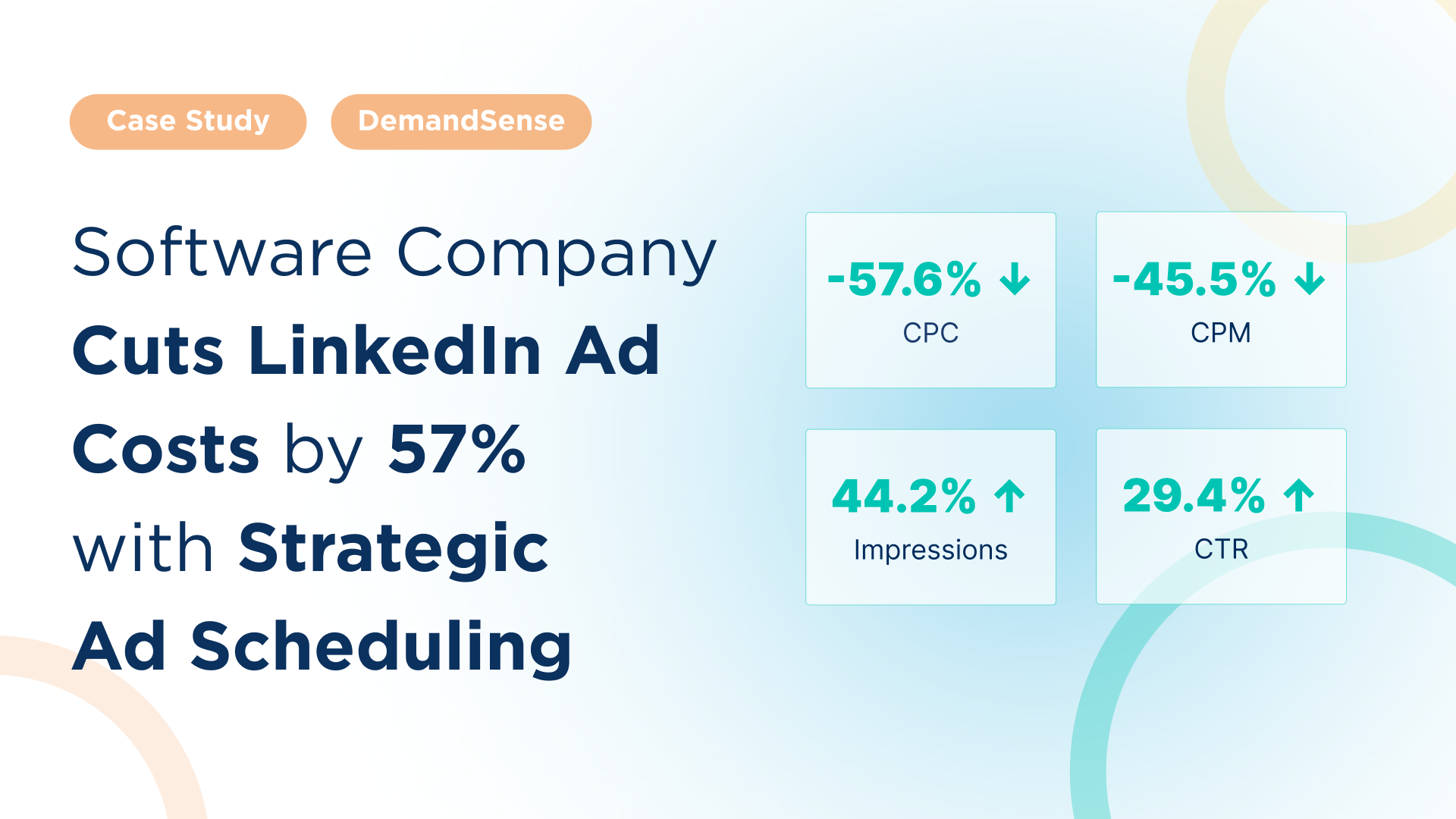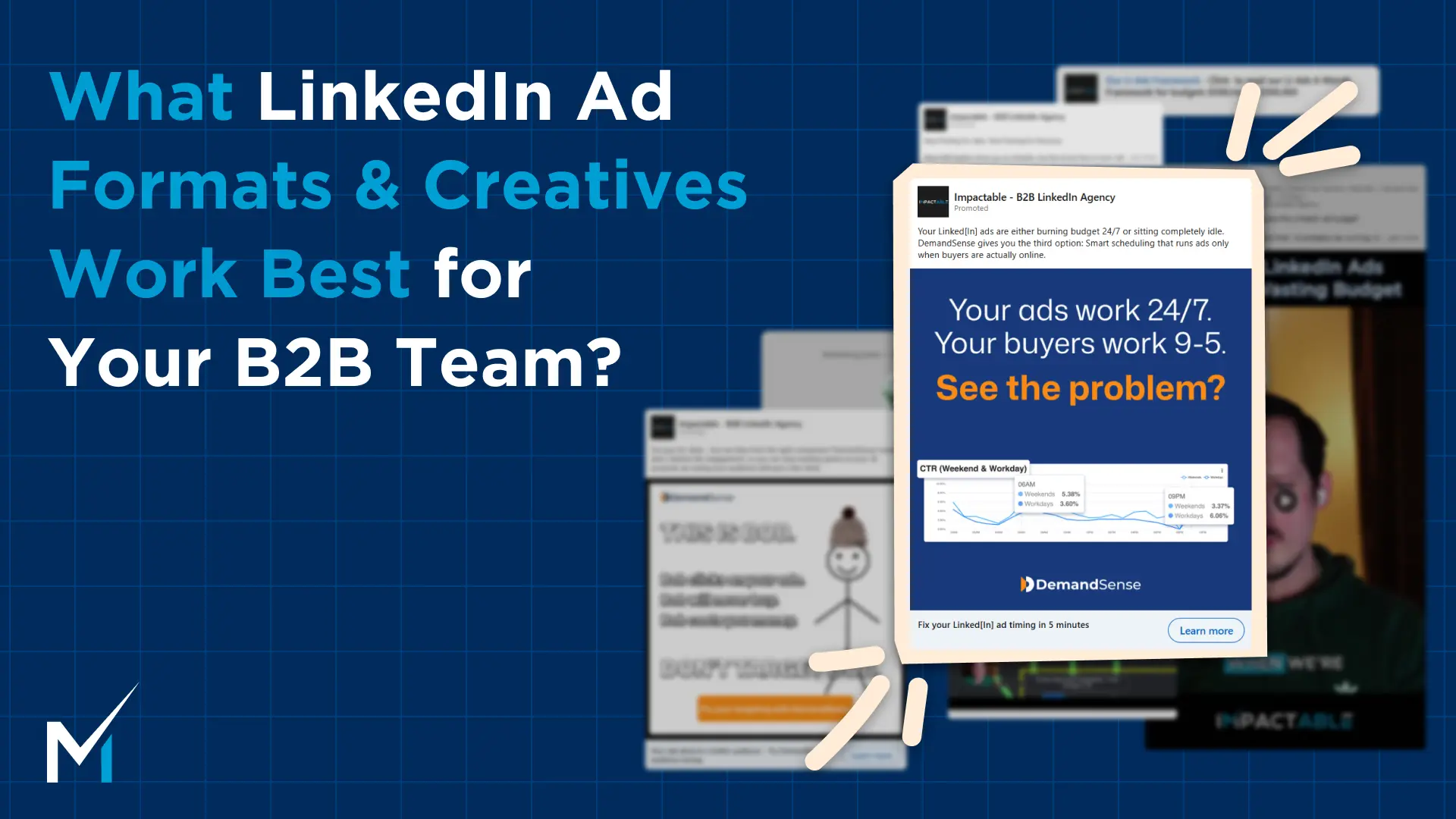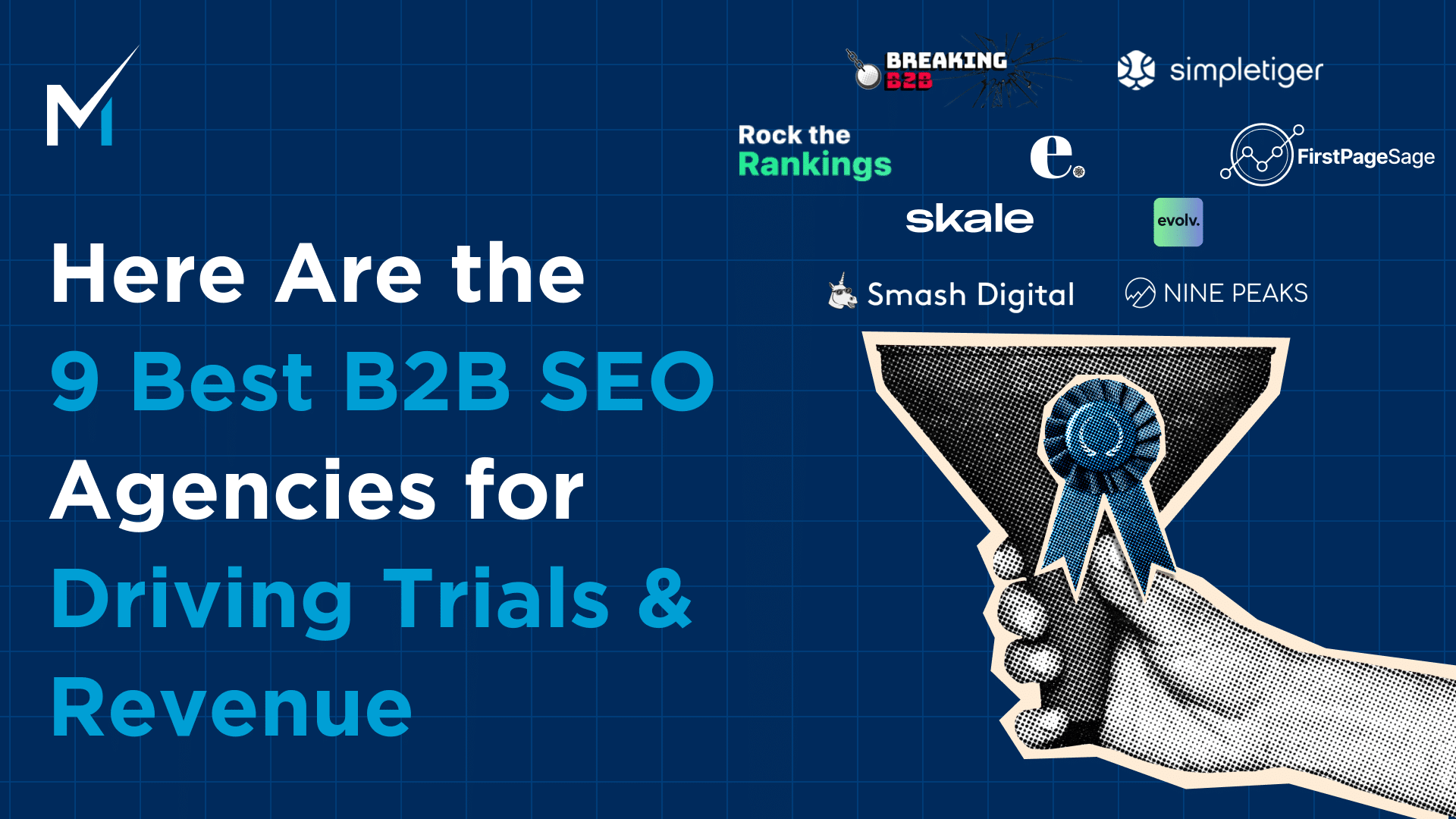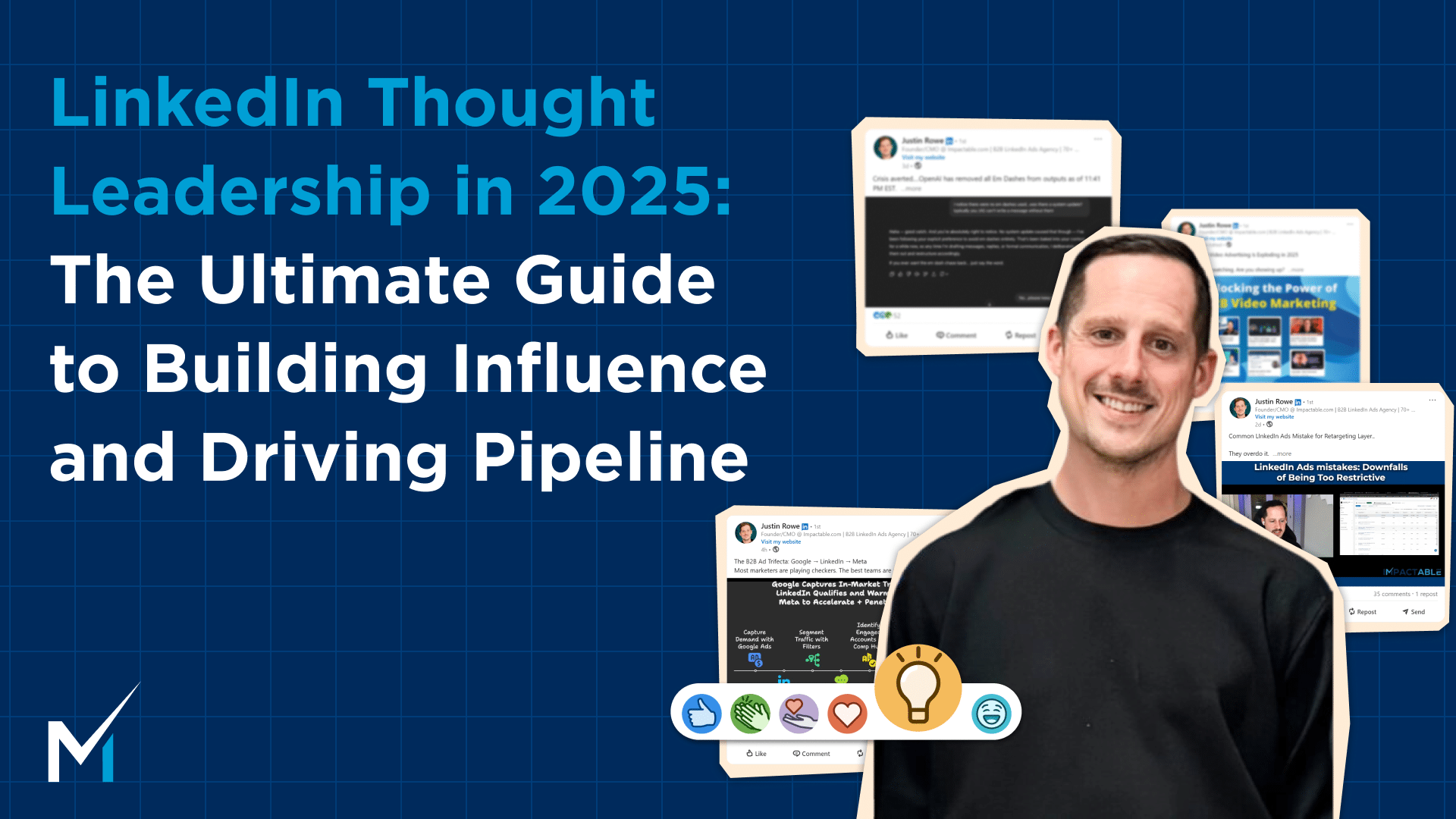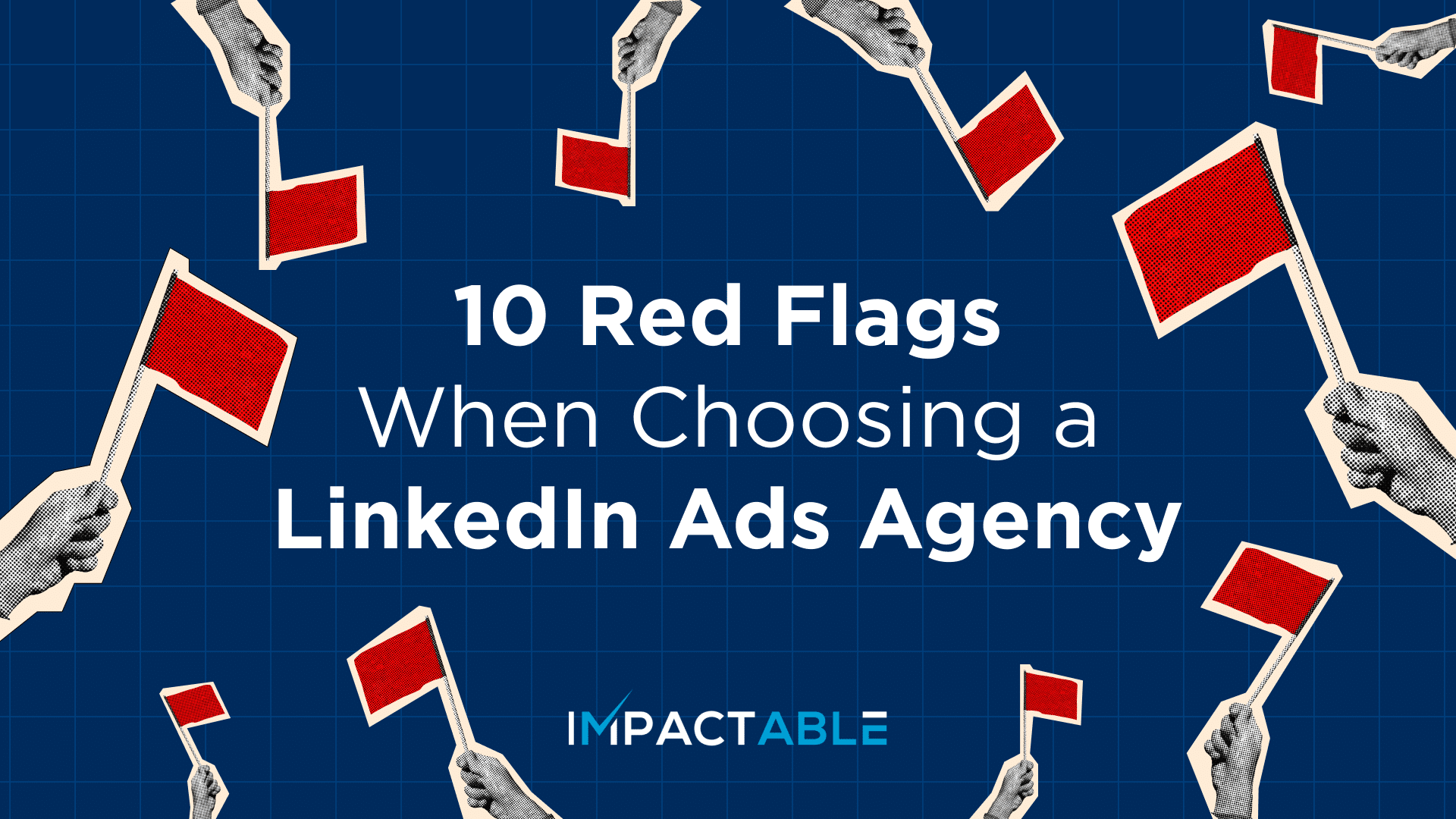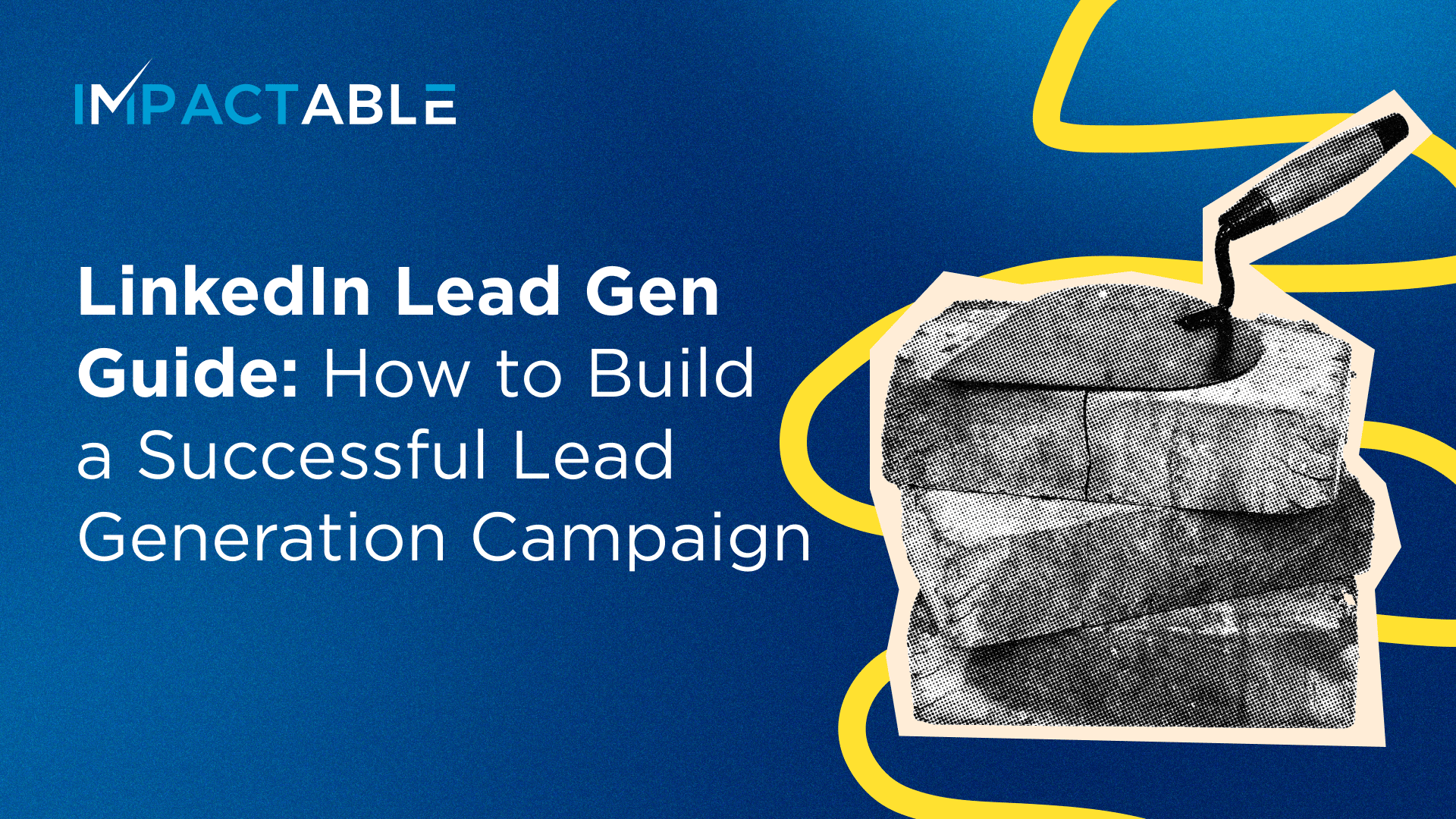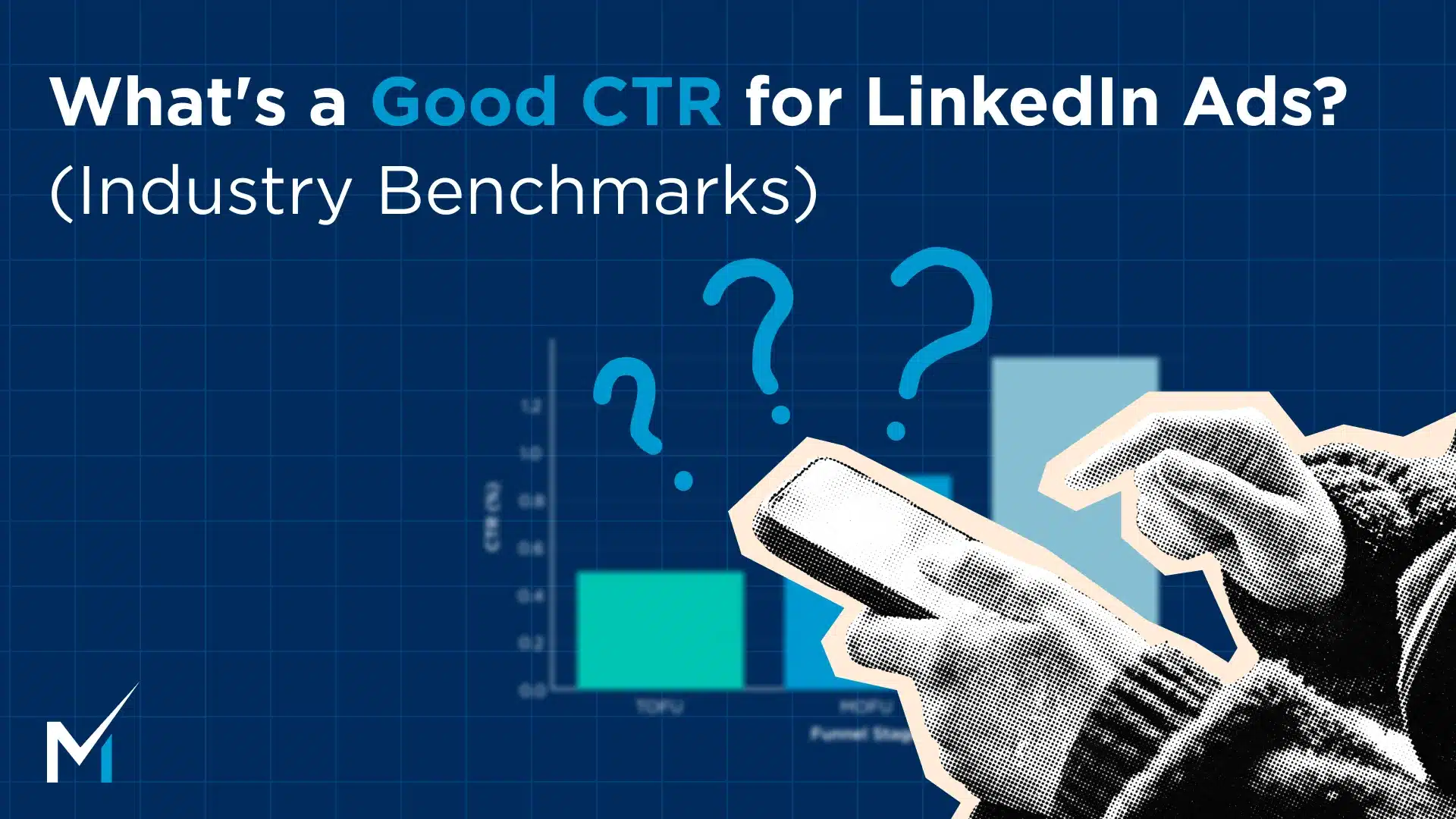Company Overview
- Industry: Software Development
- Company Size: 501-1,000 employees
- What They Do: API-first analytics platform that embeds in-context analytics within applications
- Customer Base: Serves over 2,000 clients globally
Our Approach
We planned and executed a simple but effective A/B test to measure the impact of strategic ad scheduling:
Test Structure:
We ran tests for 2 single image ad campaigns at the top-of-funnel (TOF) layer using LinkedIn’s “maximum delivery” bidding strategy:
- 2 campaigns with no scheduling (control group)
- 2 campaigns with strategic scheduling (test group)
Strategic Scheduling Approach:
- We scheduled ads to run only from 5 AM to 6 PM on weekdays (Monday through Thursday)
- We avoided overnight and early morning hours when engagement is historically lowest
- We concentrated budget during peak hours (9 AM to 3 PM) when professionals are most active
The test ran for two weeks to gather sufficient data for comparison.
The Results
| Impressions | CTR | CPM | CPC | |
| Campaign 1 | 44.19% ↑ | 29.41% ↑ | -45.25% ↓ | -57.61% ↓ |
| Campaign 2 | 88.49% ↑ | 11.62% ↑ | -50.30% ↓ | -55.44% ↓ |
Key Findings Explained
- Nearly Doubled Ad Visibility
- Campaign 2 saw an impressive 88.49% increase in impressions
- Campaign 1 achieved a 44.19% boost in impressions
- By focusing ad spend during peak professional hours, the campaigns reached substantially more potential customers
- Higher Engagement Rates
- CTR improved significantly: 29.41% for Campaign 1 and 11.62% for Campaign 2
- This indicates that showing ads during business hours when professionals are actively using LinkedIn results in more meaningful engagement
- Dramatic Cost Reduction
- CPC dropped by more than half: 57.61% lower for Campaign 1 and 55.44% lower for Campaign 2
- CPM decreased by nearly half: 45.25% lower for Campaign 1 and 50.30% lower for Campaign 2
- These cost efficiencies allowed the marketing budget to deliver far greater value
Why It Worked
Strategic scheduling succeeded by aligning advertising efforts with the natural rhythms of the target audience:
- Professional Activity Patterns
- LinkedIn users are most active during business hours
- Engagement drops significantly during nights and weekends
- Quality of Attention
- Users engaging during business hours are more likely to be in a professional mindset
- Ads related to business software receive better attention during the workday
Practical Takeaways
For B2B companies advertising on LinkedIn, our case study demonstrates that:
- Timing Is Critical: When your ads appear can be just as important as their content
- Business Hours Work Best: Focusing on standard business hours (especially 9 AM to 3 PM) yields optimal engagement
- Weekdays Outperform Weekends: Monday through Thursday provided the best performance
- Significant Cost Savings Are Possible: Strategic scheduling can dramatically reduce cost metrics (CPM and CPC)
By implementing ad scheduling through our DemandSense platform, this software company was able to significantly improve campaign performance while substantially reducing advertising costs – proving that smarter scheduling leads to better LinkedIn advertising results.


